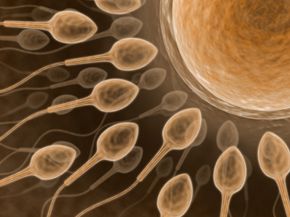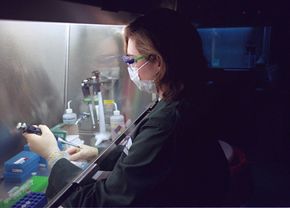Cann and her fellow researchers estimated that Mitochondrial Eve lived about 200,000 years ago. With their margin of error included, she would have been alive between 500,000 and 50,000 years ago.
Given that researchers believe Eve lived during a time when there were other women alive, how is it that humans alive today descended from her alone? There are a couple of explanations for how only Eve’s mtDNA alone could have survived, and most likely a combination of converging factors is responsible.
A Forced Bottleneck
The likeliest possibility is that an evolutionary bottleneck occurred among humankind while Eve was alive. This is a situation where a large majority of the members of species suddenly die out, bringing them to the verge of extinction.
This sudden decrease in numbers isn’t due to any kind of failure to adapt. Instead, it's more likely the result of a catastrophe of some sort — for example, the result of a comet hitting the Earth.
Afterward, just a few members remain to repopulate the group and continue to evolve. Bottlenecks might have taken place at different times in humanity’s history. Therefore, it’s not a farfetched notion that an event like this could have taken place during Eve’s lifetime.
When Humans Almost Became Extinct
A report issued in 1998 concluded that about 70,000 years ago, the number of living humans dropped to only about 15,000 people on the whole planet [source: Whitehouse]. With very few people spread out across the planet, humankind was indeed on the verge of extinction.
The event that caused the near loss of our species was an eruption of Mount Toba in Sumatra. This volcanic eruption was so immense that it lowered global temperatures, killed off the animals and plants that nourished humans and spurred the coldest ice age the planet has seen, lasting 1,000 years.
'Lucky Mother'
The Mitochondrial Eve theory evokes similar scenarios. If the human population became dramatically reduced, and there weren’t many women around to have kids, the stage is set for one “Lucky Mother,” as Cann puts it, to emerge as a most recent common ancestor.
It’s possible that after a few generations, the mtDNA of the other women died out. If a woman produces only male offspring, she won't pass on her mtDNA since children don’t receive mtDNA from their father. This means that while the woman’s sons will have her mtDNA, her grandchildren won’t, and her line will be lost.
It’s possible that this was the cause of Eve emerging as the sole “Lucky Mother,” who in essence gave birth to us all.






